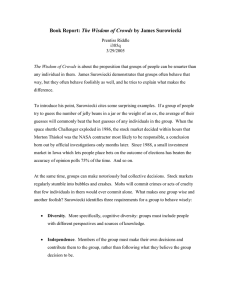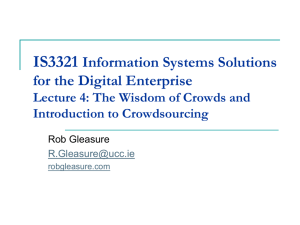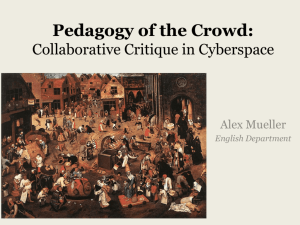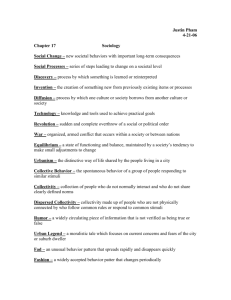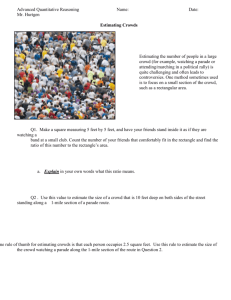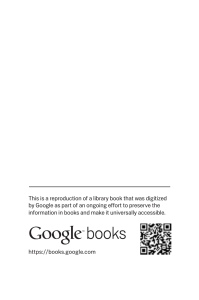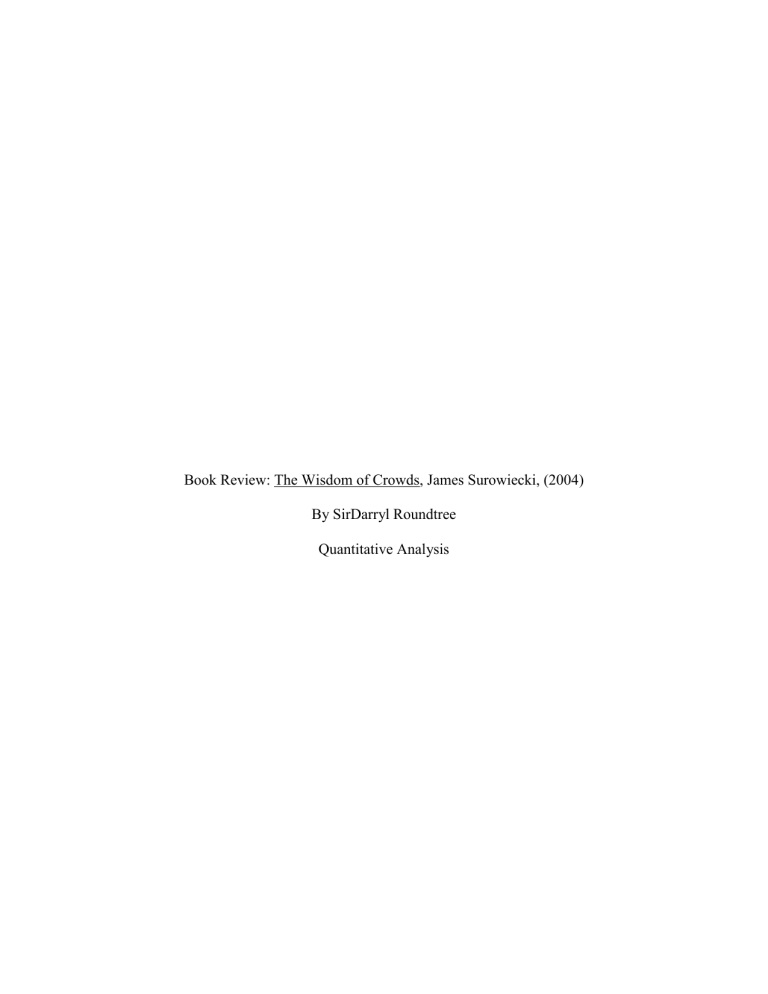
Book Review: The Wisdom of Crowds, James Surowiecki, (2004) By SirDarryl Roundtree Quantitative Analysis In the book, The Wisdom of Crowds by James Surowiecki, the author uses the story of an early 1900’s scientist and his use of an impromptu “social experiment” regarding the knowledge of the common person versus more educated elite person. To the scientist astonishment, the results of the experiment were greatly against his hypothesis. His hypothesis was that if the common person, is uneducated in affairs such as arithmetic, politics, etc., then when it come to guessing the full dress weight of a slaughtered Ox the group of uneducated common individuals would be way off from the correct answer. The experiment showed, in fact, that the crowd was surprisingly close to the correct answer. This story provides the entire basis for the novel and the thought process around using groups to develop solutions to many different problems. Based on this story, James Surowiecki wrote a fantastic novel showing his support in the application of “crowd thinking” to various scenarios. Surowiecki felt that this approach fit many problems, but generated a short list of the various types of problems that he thought “crowd” thinking would best fit. The types of problems that the author offered up to be solved were: Cognition problems – problems with definitive solutions (i.e.- sales projections, weight of an ox, etc.) Coordination problems – group problems where groups with basically the same knowledge trying to solve a problem. (i.e. – people on a sidewalk, traffic, market price of a product) Cooperation problems – how groups of “self-interest” work with each. (i.e. – paying taxes, the ultimatum game) Based on the three types of problems, the author illustrated examples of how “crowds” could successfully solve each example. In addition, the author provided some potential pitfalls and benefits of using the “crowd” method to solve problems. One example, was the use of intelligence as it related to the 9/11 attack on the Twin Towers in New York City. The author showed examples where a much better outcome would have been provided by utilizing a more centralized approach to the intelligence around the incident. Surowiecki also illustrated examples in gambling where the bookmaker in Las Vegas manages the odds to steer gamblers to ensure that the “house” doesn’t lose too much money in sports gambling. As it applies to our lives as MBA students, I think we can certainly apply the ideas from Wisdom of Crowds in our own groups as we matriculate through the MBA program. Although, because the groups are small, we have to be careful of “group think” and having enough diversity of thought when it comes to the different ideas that we are deliberating on. It also encourages us to be independent in thought, even though we are in a group environment. By being individuals with regards to our thoughts we elevate the group as a whole with our thought diversity. I think this was one of the key points of the book. That when participating in a group atmosphere, rather than influencing individuals from their original thoughts, we should embrace the differences and try to develop total solution that will encompass the individual ideas of each group member and furnish a solution based on collective input.
